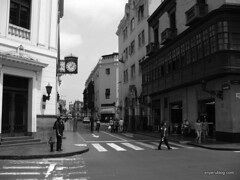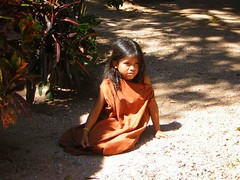Convento de San Francisco
Every tourist who visits the colonial heart of Lima visits the San Francisco convent and descends into the depths of its catacombs, filled with the bones of the first generations of Spanish settlers.
When the city of Lima was founded by Francisco Pizarro in 1535 he was under orders to set aside a vast area of the city for the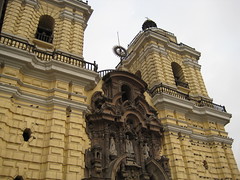 Franciscan order to build their church and convent. On what was a huge piece of land, Friar Francisco de la Cruz raised a small temporary chapel before having to leave Lima. With no other Franciscan in the area the chapel was abandoned and handed to the Dominicans. In 1546 the Franciscans returned and successfully reclaimed their land. The church then built here was adapted over the years to become one of the most beautiful examples of Spanish colonial architecture… before being completely levelled by an earthquake in 1655. Rebuilding began in 1657 under the architectural guidance of Constantino de Vasconcellos, the new church was inaugurated in 1672 with a grand ceremony in which all the city celebrated.
Franciscan order to build their church and convent. On what was a huge piece of land, Friar Francisco de la Cruz raised a small temporary chapel before having to leave Lima. With no other Franciscan in the area the chapel was abandoned and handed to the Dominicans. In 1546 the Franciscans returned and successfully reclaimed their land. The church then built here was adapted over the years to become one of the most beautiful examples of Spanish colonial architecture… before being completely levelled by an earthquake in 1655. Rebuilding began in 1657 under the architectural guidance of Constantino de Vasconcellos, the new church was inaugurated in 1672 with a grand ceremony in which all the city celebrated.
Above ground
Vasconcellos had to figure out a way to make the new building earthquake proof, and he did so with a mixture of Spanish design in the form of a barrel vault foundation and indigenous materials in the form of quincha – a flexible adobe blend.
The new building was crowned with a beautiful dome carved out of cedar wood. There’s not a decadent idolic image anywhere to be seen… this dome is in Islamic style and decorated with geometric patterns, a style brought to Spain by the Moors.
The church is also home to one of Lima’s most important libraries. Built in the 18th century, 25 thousand volumes of books are found here, many are now almost 500 years old. The furniture found here is original, the cedar-wood chairs and tables were once used by Franciscans when studying.
The convent is filled with historic art, but one painting in particularly captivating. At the end of a large dining room is a painting of The Last Supper. It offers a slightly different take on events… the disciples can be seen eating guinea pig, rocoto chillies, papayas and yuca.
Catacombs
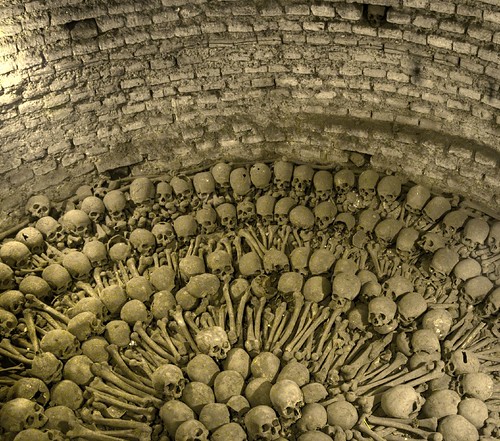 The small city of Lima had, since its foundation, no proper place to bury its dead. It was left up to the city’s churches to arrange burial and the obvious place was beneath the churches themselves, often seen by believers as a sure way to get into heaven.
The small city of Lima had, since its foundation, no proper place to bury its dead. It was left up to the city’s churches to arrange burial and the obvious place was beneath the churches themselves, often seen by believers as a sure way to get into heaven.
As the largest church, San Francisco had to deal with the greatest number of people. Vast underground recesses were built that stretched out under the church and even as far as the Presidential Palace and the Desamparados train station.
Whether poor or affluent, every citizen was accommodated and the catacombs eventually came to house 25,000 bodies before a proper city cemetery was built in Rimac. Lost in time, the galleries and passages that make up this subterranean graveyard were reopened and restored in 1947 and are now open to the public to visit.
A tour down into the dark narrow passages, their low ceilings and arches, takes you through dozens of burial chambers. The most astonishing sights are the ten metre deep pits that are filled with arranged human bones. Skulls, femurs and tibiae are all on show – these are the remains of Lima’s poorer Spanish settlers, the new generations of mixed Spanish and indigenous, and of slaves and servants.
Tags: architecture, catacombs, catholics, church, colonial, convento san francisco, earthquake, franciscans, lima, pizarro, spaniards


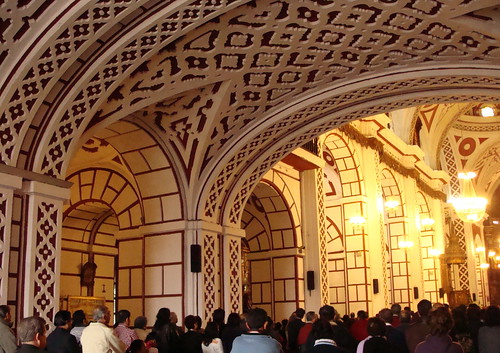


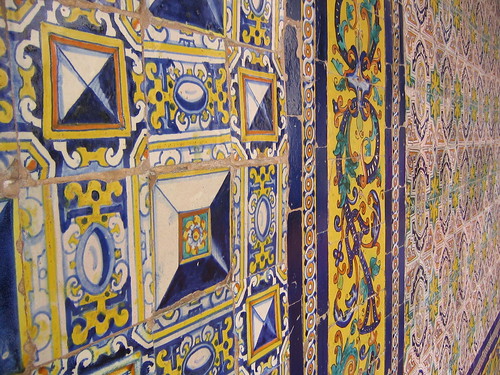

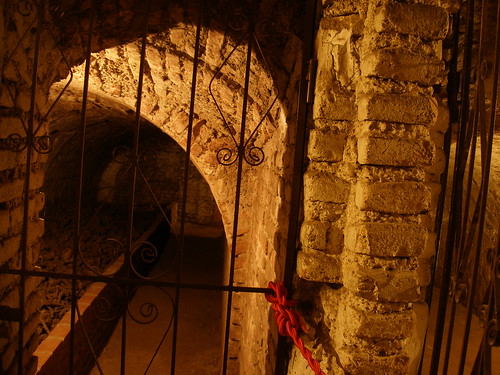


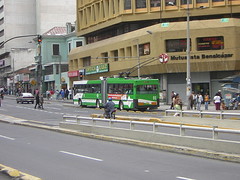
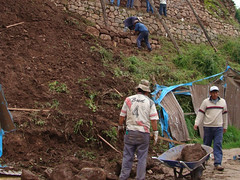


![When the U.S. sneezes, Peru drinks tea. [Featured]](http://farm4.static.flickr.com/3192/2959833537_af77ed5003_m.jpg)
